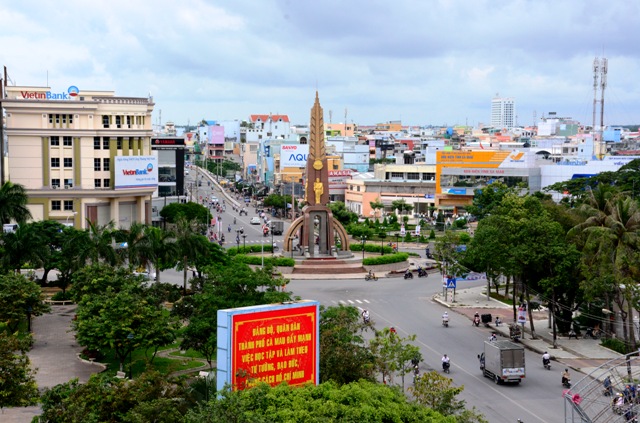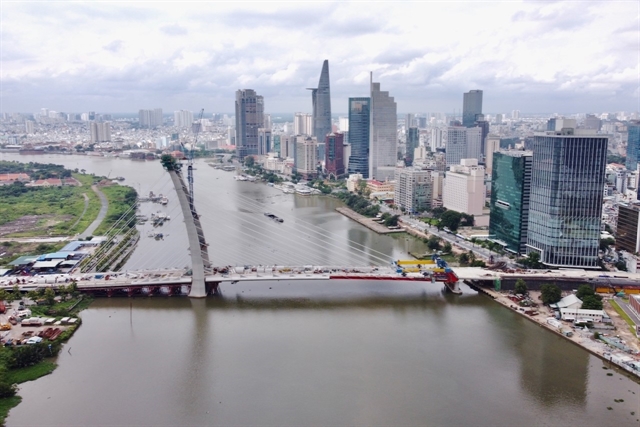Việt Nam to shine in second half of 2022
HSBC Global Research expects Việt Nam to be among the region's top growing nations, as it was one of the world's few countries to record growth in two consecutive years since the pandemic.
Việt Nam's economy has started 2022 on a firm footing. Sticking with a policy to "co-live with the virus," the country has accelerated its vaccination drive and gradually removed local restrictions, fuelling consumer sentiment, leading to an ongoing rebound in local consumption, according to analysts of Markets and Securities Services, HSBC Vietnam.

Meanwhile, manufacturing continues to roar, growing at 8.48 per cent year-on-year.
In addition, the PMI rose from 51.7 in April to 54.7 in May, recording a 12-month-high before decreasing slightly to 54 in June.
Thanks to multi-year consistent FDI inflows in tech manufacturing, the country has successfully transformed into a rising global base.
Most importantly, Việt Nam's key growth engine is set to recover strongly as the labour shortage continues to ease. After the Tết holidays, over 90 per cent of workers have returned to HCM City.
The country's export grew 17.3 per cent year-on-year in the first six months of 2022. Its second quarter's GDP rose to 7.72 per cent year on year thanks to broad-based growth, leading to a 6.42 per cent year-on-year growth in the first half of this year.
All of these point to a steady recovery in the country. Thus, HSBC now expects the economy to grow 6.9 per cent (up from our previous forecast of 6.2 per cent and 6.6 per cent) in 2022, likely topping the region.
Despite the optimism, headwinds prevail. In particular, Việt Nam is facing multiple challenges given elevated global energy prices. This will increase its energy bills, deteriorating its terms of trade.
Wary of risks
A surge in global energy prices remains the biggest risk to the country's growth. The most evident impact is Việt Nam's increasing energy bills.
Despite strong exports, the trade balance has narrowed to a marginal surplus of only US$0.6 billion in the first five months of 2022.
This will erode the country's current account advantage, putting downward pressure on the Vietnamese đồng. Analysts expect Việt Nam to run a current account deficit for the second consecutive year, although the magnitude should be smaller than that of 2021.
In addition, stiffening trade headwinds need to be watched closely. A rotation of global demand from goods to services and lingering supply chain disruptions in mainland China will determine how long Việt Nam's strong export growth can be sustained.
Việt Nam to shine in second half of 2022

Việt Nam has become the regional top-performing economy thanks to its resilient huge economic potential and quick return post-Covid. HSBC Global Research expects Việt Nam to be among the region's top growing nations.
However, China's supply chain disruptions will make its import-intensive manufacturing base increasingly challenging. In the first half of 2022, 94 per cent of its imports came from materials, with China remaining Việt Nam's largest import market.
FDI continues to drive Việt Nam's economic success story. The country is among the top two ASEAN FDI receivers relative to GDP, highlighting its increasing attractiveness. In recent years, the country has become a rising star in global supply chains, gaining substantial global market share in sectors, including textiles, footwear and consumer electronics.
FDI attraction is equally important as sustainability for the country. Now that Việt Nam has made its ambitious commitment at COP26, sustainability has gained more attention. For example, Việt Nam Association Of Supporting Industries (VASI) has suggested refining the quality of FDI, which means non-renewable energy-consuming or environment-unfriendly technologies are not allowed to enter Việt Nam. "Green FDI" will be a key trend that Việt Nam should look out for in the future.
To attract "green FDI", Việt Nam has been driving the economy towards green growth, sustainability and lower greenhouse gas emissions through National Green Growth Strategy 2021-2030.




